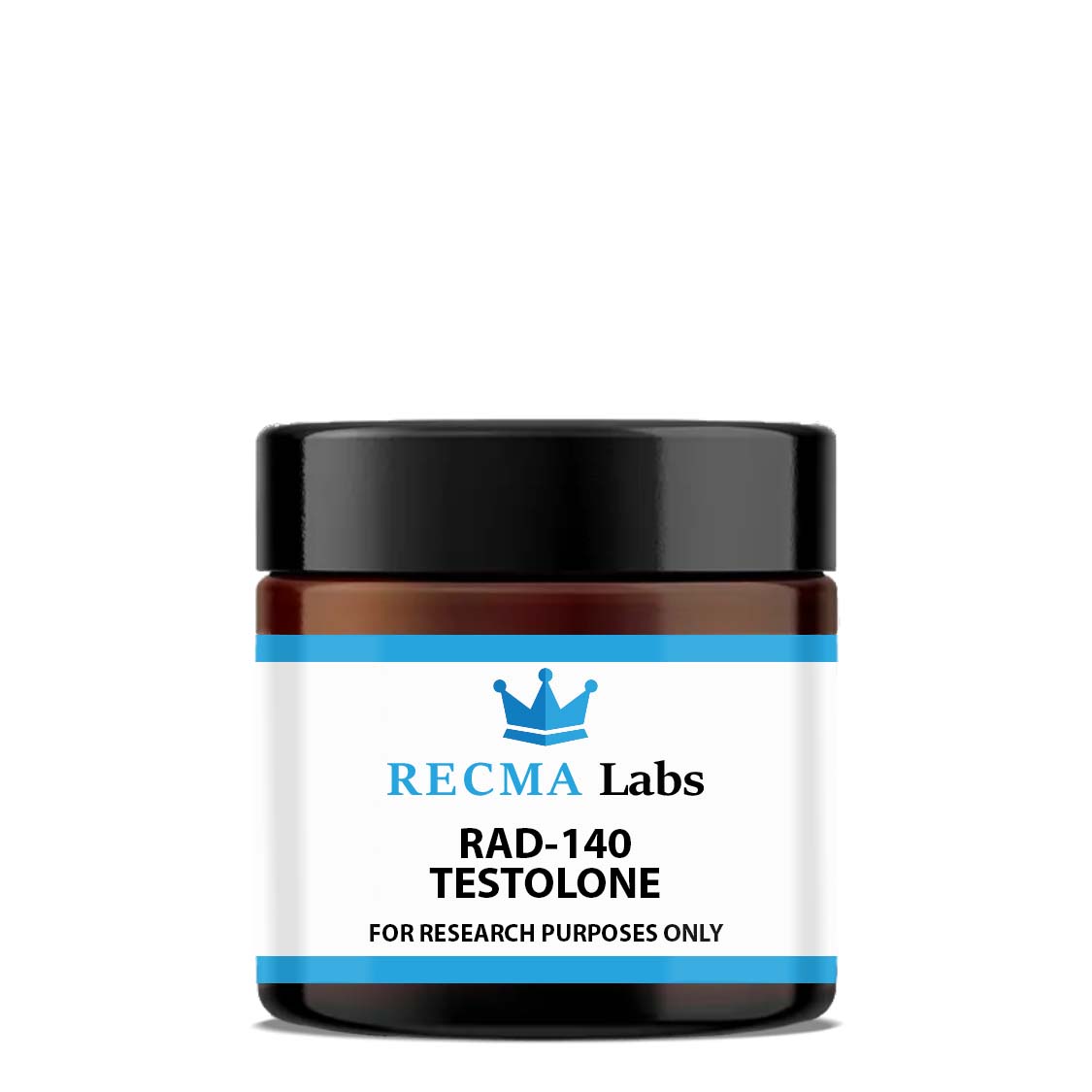

- Description
- Data Sheet
Testolone RAD-140
Effects of RAD 140 on animal body mass
RAD 140 SARM, chemically known as (2-chloro-4-[[(1R,2S)-1-[5-(4-cyanophenyl)-1,3,4-oxadiazol-2-yl]-2-hydroxypropyl] amino]-3-methylbenzonitrile) and also called testolone, was originally synthesized by Radius Health Inc. in collaboration with researchers from the University of Illinois, Obiter Research and Cambridge Major Laboratories.
According to the first study describing the synthesis and preliminary findings of the compound, RAD140 shows high stability (with a half-life of more than 2 hours) in incubations with rat and monkey microsomes. It also has a high affinity for the androgen receptor (with a Ki of 7 nM), about four times higher than that of testosterone itself. At the same time, the nearest hormone receptor activated by RAD140, progesterone, was at a level of 750 nM.
The earliest studies in primates showed that even at the lowest dose of 0.1 mg/kg, young macaques gained an average of 10% body weight over a 28-day trial period. This increase was mainly confirmed as lean body mass, as evidenced by DEXA scans performed before and after the trial period. However, these results were somewhat variable.
Effects of RAD 140 on neurons
In a study conducted by Jayaraman et al., castrated male rats were examined to determine the neuroprotective effects of RAD 140 supplementation. This with a view to possible applications of SARMs against neurodegenerative disorders.
The rats were administered 1 mg/kg RAD 140 orally daily for two weeks. It was found that RAD140 was able to significantly reduce apoptosis induced by Aβ, apoptosis activator II and hydrogen peroxide. This is attributed to the role MAPK signaling plays in neuroprotection.
Aβ was by far the most potent apoptosis trigger administered to the rats. After 24 hours of exposure to Aβ, the number of viable neurons in the rats was reduced by 50%. However, when RAD 140 was administered in a concentration-dependent manner, neuron viability increased exponentially. The most effective concentration of RAD 140 was 100 nM, leading to approximately 90% survival of neurons after Aβ exposure (Source).
In addition to measuring the neuroprotective effects against various forms of apoptosis, the researchers also examined the effects of RAD 140 on kainate acid-induced neuronal death. It was found that this form of neuronal death was significantly reduced compared to a control group (Source).
DISCLAIMER
This material is sold for use in laboratory research only. Terms of sale apply. Not for human consumption, nor for medical, veterinary or household use. Familiarize yourself with our DISCLAIMER before ordering.
RAD140 (Testolone)
|
Application |
Selective Androgen Receptor Modulator |
|
CAS |
1182367-47-0 |
|
molar massa |
393.83 g/mol |
|
Chemical formula |
C20H16ClN5O2 |
|
IUPAC name |
2-chloro-4-{[(1R,2S)-1-[5-(4-cyanophenyl)-1,3,4-oxadiazol-2-yl]-2-hydroxypropyl]amino}-3-methylbenzonitrile |
|
Synonyms |
RAD140, RAD-140, Testolone |
|
Bulletin |
room temperature |
|
Solubility |
Soluble in ethanol, PEG400 |
|
Organoleptic profile |
Clear liquid |
|
Physical form |
Powder |
|
Specification |
≥98% |
|
Terms and conditions |
This material is sold for use in laboratory research only. Terms of sale apply. Not for human consumption, nor for medical, veterinary or household use. Please familiarize yourself with our terms and conditions & disclaimer before ordering. |

Choose options


